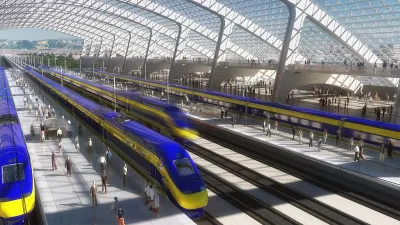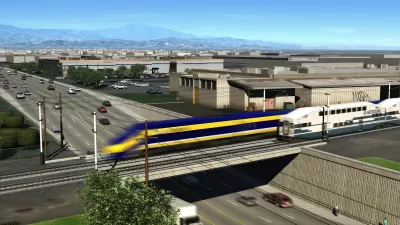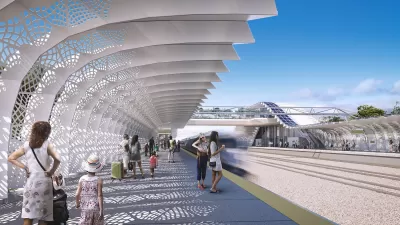With costs rising from $40 billion to $105 billion, the California High-Speed Rail project is still moving slowly along, though with a heftier price tag.

The California High-Speed Rail Authority (CHSRA) recently released the draft 2022 business plan for the California High-Speed Rail project. The draft business plan adds another $5 billion in cost to the already delayed and increasingly expensive project.
An article published by Roads & Bridges shares news of the new business plan, aggregating original coverage by Kathleen Ronayne for the Associated Press.
As noted by both articles, the estimated cost of the project was $40 billion when voters approved bond funding for the project in 2008. The project estimate now totals $105 billion.
Both articles provide coverage of the current funding opportunities in the mix for the project. California Governor Gavin Newsom's draft budget for the year, for example, proposes billions of dollars for rail and transportation projects, which could contribute funding if approved by the State Legislature. Meanwhile, Democrats in the California State Legislature closed out the 2021 legislative session by trying to revoke funding from the 2008 bond.
Then there is the federal government's see-sawing support for the project:
"Back in May 2019, the Federal Railroad Administration announced it was officially terminating its agreement with the CHSRA for the high-speed rail project, canceling nearly $1 billion in funding," according to Roads and Bridges. The Biden administration has since returned the funding, according to the article.
Governor Newsom has also wavered in support of the project in the past: In February 2019, Newsom announced plans to scale back the high-speed rail project.
FULL STORY: CALIFORNIA HIGH-SPEED RAIL AUTHORITY RELEASES DRAFT 2022 BUSINESS PLAN

Study: Maui’s Plan to Convert Vacation Rentals to Long-Term Housing Could Cause Nearly $1 Billion Economic Loss
The plan would reduce visitor accommodation by 25,% resulting in 1,900 jobs lost.

North Texas Transit Leaders Tout Benefits of TOD for Growing Region
At a summit focused on transit-oriented development, policymakers discussed how North Texas’ expanded light rail system can serve as a tool for economic growth.

Why Should We Subsidize Public Transportation?
Many public transit agencies face financial stress due to rising costs, declining fare revenue, and declining subsidies. Transit advocates must provide a strong business case for increasing public transit funding.

How to Make US Trains Faster
Changes to boarding platforms and a switch to electric trains could improve U.S. passenger rail service without the added cost of high-speed rail.

Columbia’s Revitalized ‘Loop’ Is a Hub for Local Entrepreneurs
A focus on small businesses is helping a commercial corridor in Columbia, Missouri thrive.

Invasive Insect Threatens Minnesota’s Ash Forests
The Emerald Ash Borer is a rapidly spreading invasive pest threatening Minnesota’s ash trees, and homeowners are encouraged to plant diverse replacement species, avoid moving ash firewood, and monitor for signs of infestation.
Urban Design for Planners 1: Software Tools
This six-course series explores essential urban design concepts using open source software and equips planners with the tools they need to participate fully in the urban design process.
Planning for Universal Design
Learn the tools for implementing Universal Design in planning regulations.
City of Santa Clarita
Ascent Environmental
Institute for Housing and Urban Development Studies (IHS)
City of Grandview
Harvard GSD Executive Education
Toledo-Lucas County Plan Commissions
Salt Lake City
NYU Wagner Graduate School of Public Service





























